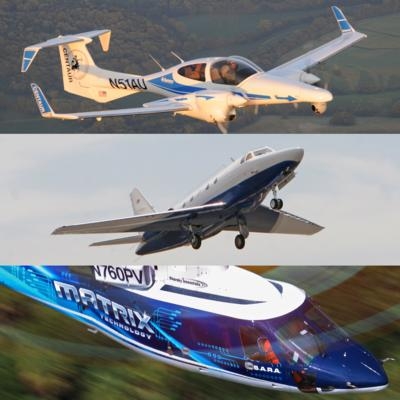Thu, Mar 12, 2015
Phase 1 Research Includes Planned Ground And Flight Demonstrations To Help Mature Capabilities Faster
In the latest step in a decades-long process through which automation has taken on increasing responsibilities in the cockpit—allowing pilots to focus on flight tasks demanding their unique capabilities—DARPA has awarded three contracts for its Aircrew Labor In-Cockpit Automation System (ALIAS) program.

ALIAS envisions a tailorable, drop-in, removable kit that would enable high levels of automation in existing aircraft and facilitate reduced need for onboard crew. The program intends to leverage the considerable advances that have been made in aircraft automation systems over the past 50 years, as well as the advances that have been made in remotely piloted aircraft technologies, to help shift and refocus pilot workloads, augment mission performance and improve aircraft safety.
DARPA has awarded prime contracts for ALIAS to the following companies:
- Aurora Flight Sciences Corporation
- Lockheed Martin Corporation
- Sikorsky Aircraft Corporation
These performers are working with DARPA’s technical team, which includes experts from the National Aeronautics and Space Administration (NASA), the U.S. Air Force, the U.S. Army and the U.S. Navy.
In Phase 1 of ALIAS, DARPA intends to focus on three critical technology areas:
- Development of minimally invasive interfaces between new automation systems and existing aircraft
- Knowledge acquisition on aircraft operations, to support rapid adaptation of the ALIAS toolkit across different aircraft
- Human-machine interfaces that would enable high-level human supervision instead of requiring pilots’ constant vigilance over lower-level flight maintenance tasks
“Because we want to develop a drop-in system for existing aircraft, we chose performers who could conduct actual ground and flight demonstrations at the start of the program instead of at the end,” said Dan Patt, DARPA program manager. “We’re excited to have a lot of Phase 1 hardware ready to test, which we hope will steepen our learning curve and mature the capability faster. We will also be working closely with members of the crew-operations community, and will be integrating their feedback to help ensure that the move towards greater automation takes best advantage of machine and human skill sets.”
(Image provided by DARPA)
More News
Performance-Based Navigation (PBN) [ICAO] Area navigation based on performance requirements for aircraft operating along an ATS route, on an instrument approach procedure or in a d>[...]
The Airplane Came To Rest Underneath A Set Of Damaged Power Distribution Lines On The Floor Of A Coulee On June 19, 2025, at 1412 mountain daylight time, a Cessna 172K airplane, N7>[...]
Aero Linx: FAA Managers Association (FAAMA) Recognized by the FAA, FAAMA is a professional association dedicated to the promotion of excellence in public service. The Association i>[...]
From 2023 (YouTube Edition): Jet Central Micro-Turbine Engines Impress Founded in the late-1990s, Mexico City-based Jet Central produces a unique and fascinating line of micro-turb>[...]
Also: ANOTHER Illegal Drone, KidVenture Educational Activities, Record Launches, TSA v Shoes The Senate confirmed Bryan Bedford to become the next Administrator of the FAA, in a ne>[...]
 ANN's Daily Aero-Term (07.10.25): Performance-Based Navigation (PBN) [ICAO]
ANN's Daily Aero-Term (07.10.25): Performance-Based Navigation (PBN) [ICAO] NTSB Prelim: Cessna 172
NTSB Prelim: Cessna 172 ANN's Daily Aero-Linx (07.10.25)
ANN's Daily Aero-Linx (07.10.25) Classic Aero-TV: The Big Business of Diminutive Powerplants
Classic Aero-TV: The Big Business of Diminutive Powerplants Airborne 07.11.25: New FAA Bos, New NASA Boss (Kinda), WB57s Over TX
Airborne 07.11.25: New FAA Bos, New NASA Boss (Kinda), WB57s Over TX



